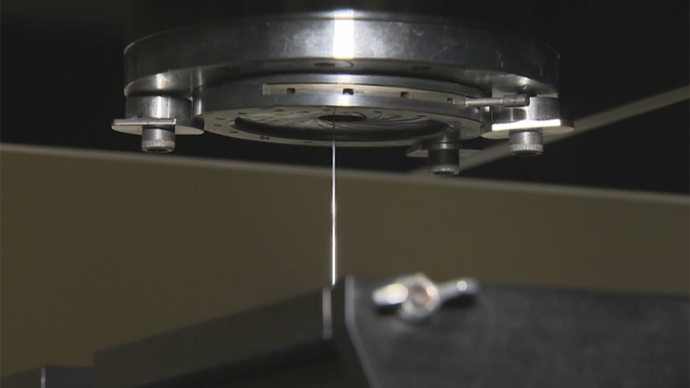Brain-friendly electrodes can pump drugs to neurons

MIT researchers have developed a technology to create flexible biocompatible electrodes for implanting into the brain or spinal column. These can carry drugs and send optical signals to stimulate neurons.
The electrodes will offer a new tool to neuroscientists studying the complexity of the brain, Polina Anikeeva, an assistant professor of materials science and engineering, told RT.
“Electrons implanted in the brain have been used to record information that allowed a paralyzed patient to control robotic arms, for example. This is something that we would like to contribute to,” she said.
The electrodes start off as a centimeters-thick preform, having an arrangement of up to seven channels required for the final probe. They may have optical waveguides to carry light, hollow tubes to deliver drugs and conductive material for electric signals.
The template is then heated and drawn into a thin fiber, which can reduce the cross-section of the material 200-fold. Additional treatment of the fiber’s coating renders it softer and as thin as a human hair before implantation. The resulting probe is less rigid and more flexible than normal electrodes, which means it causes less damage to actual brain tissue when implanted. Potentially the probes can be reduced further to nanoscale.
The fabrication process is called thermal drawing and has been used in telecommunications to produce optic fibers. MIT’s professor of materials science, Yoel Fink, whose team worked with Anikeeva on the project, pioneered the technology’s application in photonics. The tricky part was to find the right materials to soften at the same temperature.
The numerous channels allow an implanted probe to deliver drugs and light signals to specific neurons, a process called, optogenetic neural stimulation, while monitoring resulting electric activity. The researchers hope this new interface between brain and instruments will revolutionize neurologic research, especially since it can be tailored for the needs of a particular team.
Anikeeva said the new probes are “a tool that hopefully will allow us to scratch the surface of [human brain] complexity. In that sense it’s the holy grail of understanding how we as human beings function.”












